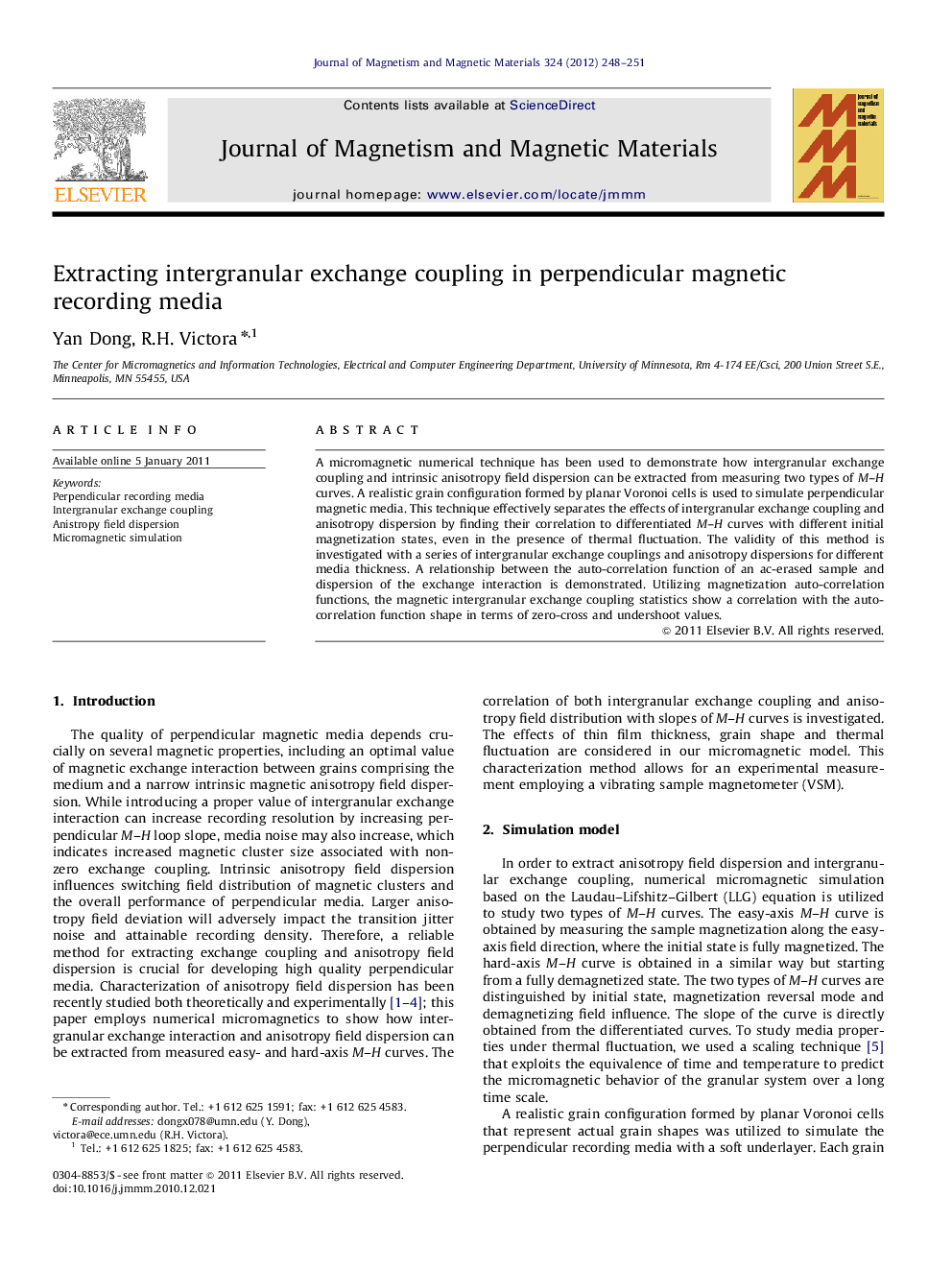| Article ID | Journal | Published Year | Pages | File Type |
|---|---|---|---|---|
| 1800152 | Journal of Magnetism and Magnetic Materials | 2012 | 4 Pages |
A micromagnetic numerical technique has been used to demonstrate how intergranular exchange coupling and intrinsic anisotropy field dispersion can be extracted from measuring two types of M–H curves. A realistic grain configuration formed by planar Voronoi cells is used to simulate perpendicular magnetic media. This technique effectively separates the effects of intergranular exchange coupling and anisotropy dispersion by finding their correlation to differentiated M–H curves with different initial magnetization states, even in the presence of thermal fluctuation. The validity of this method is investigated with a series of intergranular exchange couplings and anisotropy dispersions for different media thickness. A relationship between the auto-correlation function of an ac-erased sample and dispersion of the exchange interaction is demonstrated. Utilizing magnetization auto-correlation functions, the magnetic intergranular exchange coupling statistics show a correlation with the auto-correlation function shape in terms of zero-cross and undershoot values.
Research highlights► Increasing intergranular exchange increases both MH loop slopes. ► Larger anisotropy dispersion only increases hard-axis MH slope. ► The effect of anisotropy dispersion is more significant as intergranular exchange increases. ► Dispersed intergranular exchange can be studied from the magnetization correlation function.
